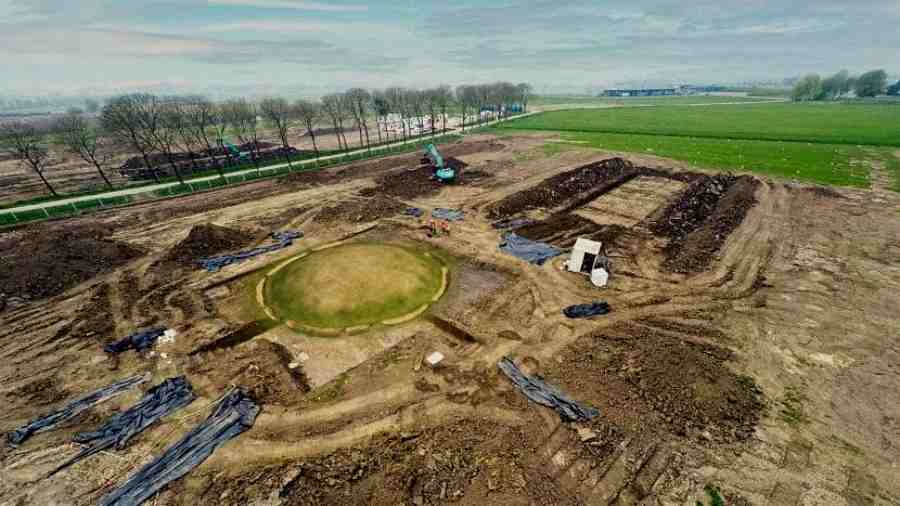![]() Credit: Gemeente Tiel
Credit: Gemeente Tiel
Sat 24 June 2023:
The “Stonehenge of the Netherlands” was recently found by archaeologists in the Netherlands. It is a 4,000-year-old sacred burial ground.
The mound is 65 feet in diameter and contains the remains of about 60 men, women, and children. The burial site features multiple openings where the sun would shine directly on the longest and shortest days of the year, the winter and summer solstices.
The town of Tiel, which is 45 miles east of Rotterdam, was discovered by archaeologists after six years of digging.
Taking to its Facebook page, the town of Tiel said, “What a spectacular archaeological discovery! Archaeologists have found a 4,000-year-old religious sanctuary on an industrial site. This is the first time a site like this has been discovered in the Netherlands.”
Another highly significant Stonehenge
“The largest mound served as a sun calendar, similar to the famous stones of Stonehenge in England,” the town said in a statement.
The locations where the sun shone straight also yielded offerings of both human and animal skulls as well as priceless items like a metal spearhead.
“This sanctuary must have been a highly significant place where people kept track of special days in the year, performed rituals and buried their dead. Rows of poles stood along pathways used for processions,” the town stated.
Meanwhile, the national broadcaster NOS said, “This hill reminded one of Stonehenge, the well-known mysterious prehistoric monument in Britain, where this phenomenon also occurs.”
The specialists also discovered a glass bead in the excavation, which they believe was brought from Mesopotamia (present-day Iraq) to the region. Chief researcher Cristian van der Linde stated that this bead traveled 5,000 kilometers four millennia ago.
University of Groningen professor Stijn Arnoldussen said that “the bead must have been a spectacular item as for people then it was an unknown material.”
“Things were already being exchanged in those times. The bead may have been above ground for hundreds of years before it reached Tiel, but of course, it didn’t have to be,” Arnoldussen stated.
Two other, smaller mounds were also found by the archaeologists, and it is thought that they had been in use for about 800 years. They were being used for burial ceremonies. The calendar was primarily used to assess harvest and festival dates, the archaeologists continued.
SOURCE: INDEPENDENT PRESS AND NEWS AGENCIES
______________________________________________________________
FOLLOW INDEPENDENT PRESS:
TWITTER (CLICK HERE)
https://twitter.com/IpIndependent
FACEBOOK (CLICK HERE)
https://web.facebook.com/ipindependent
Think your friends would be interested? Share this story!





